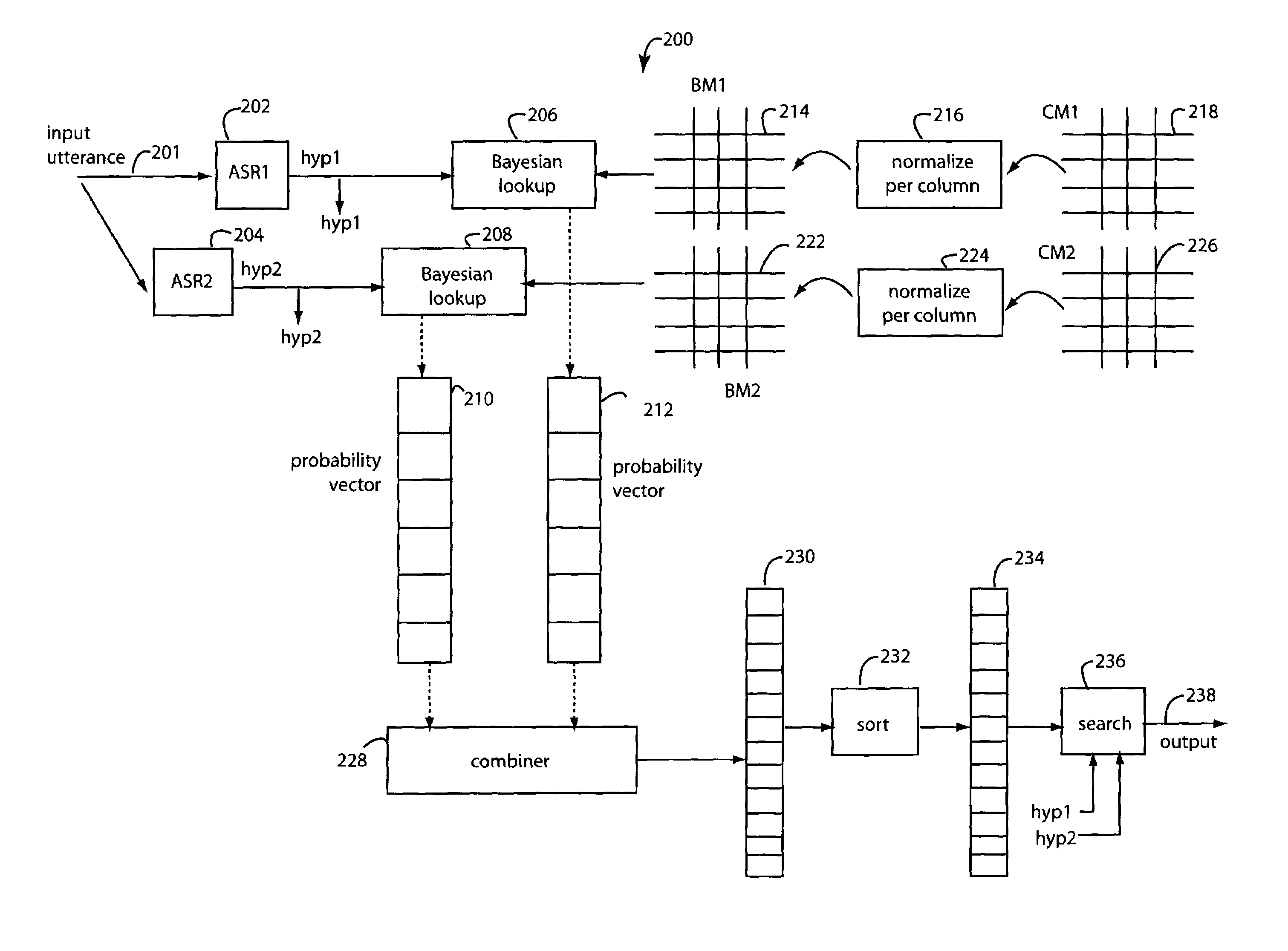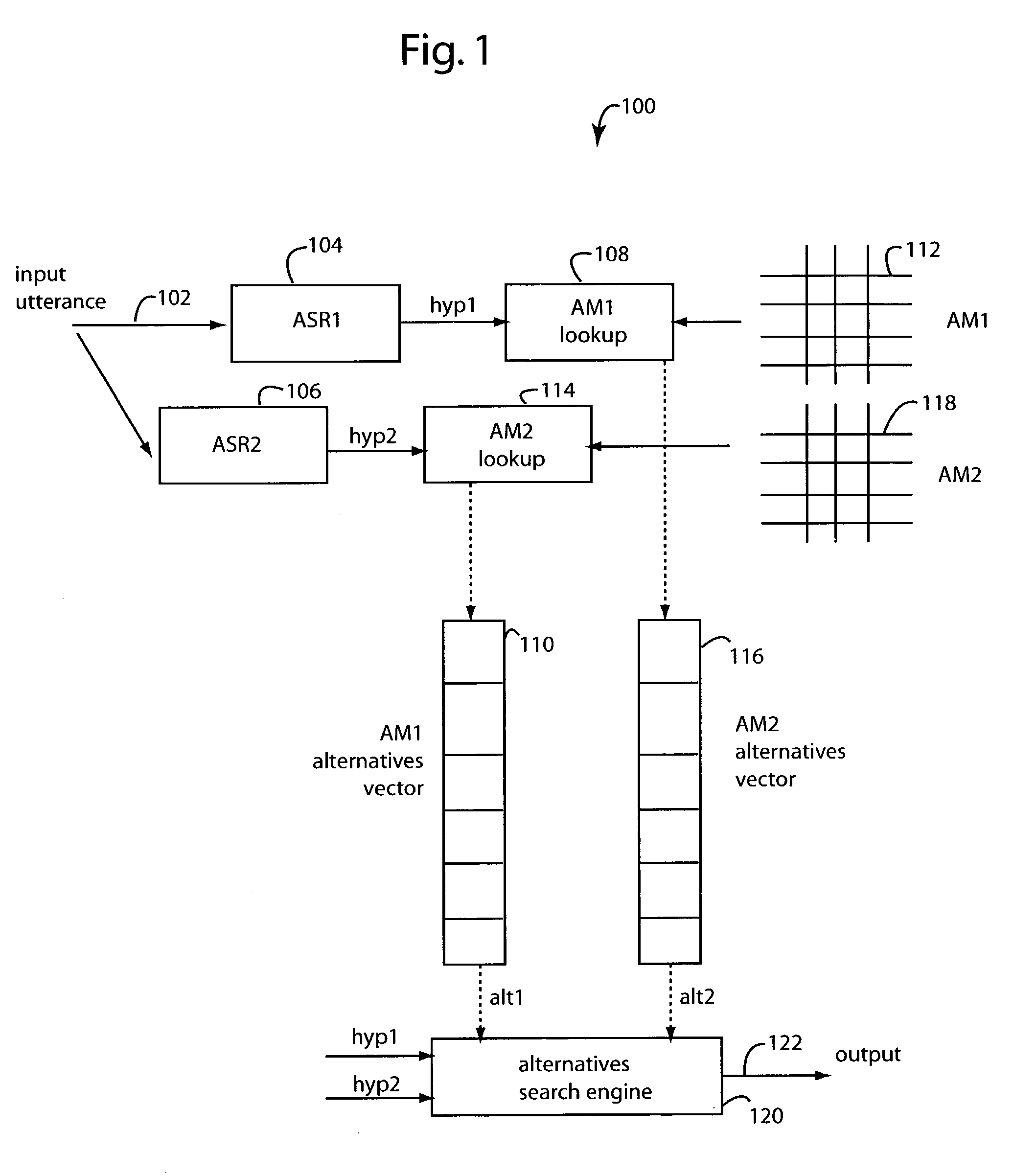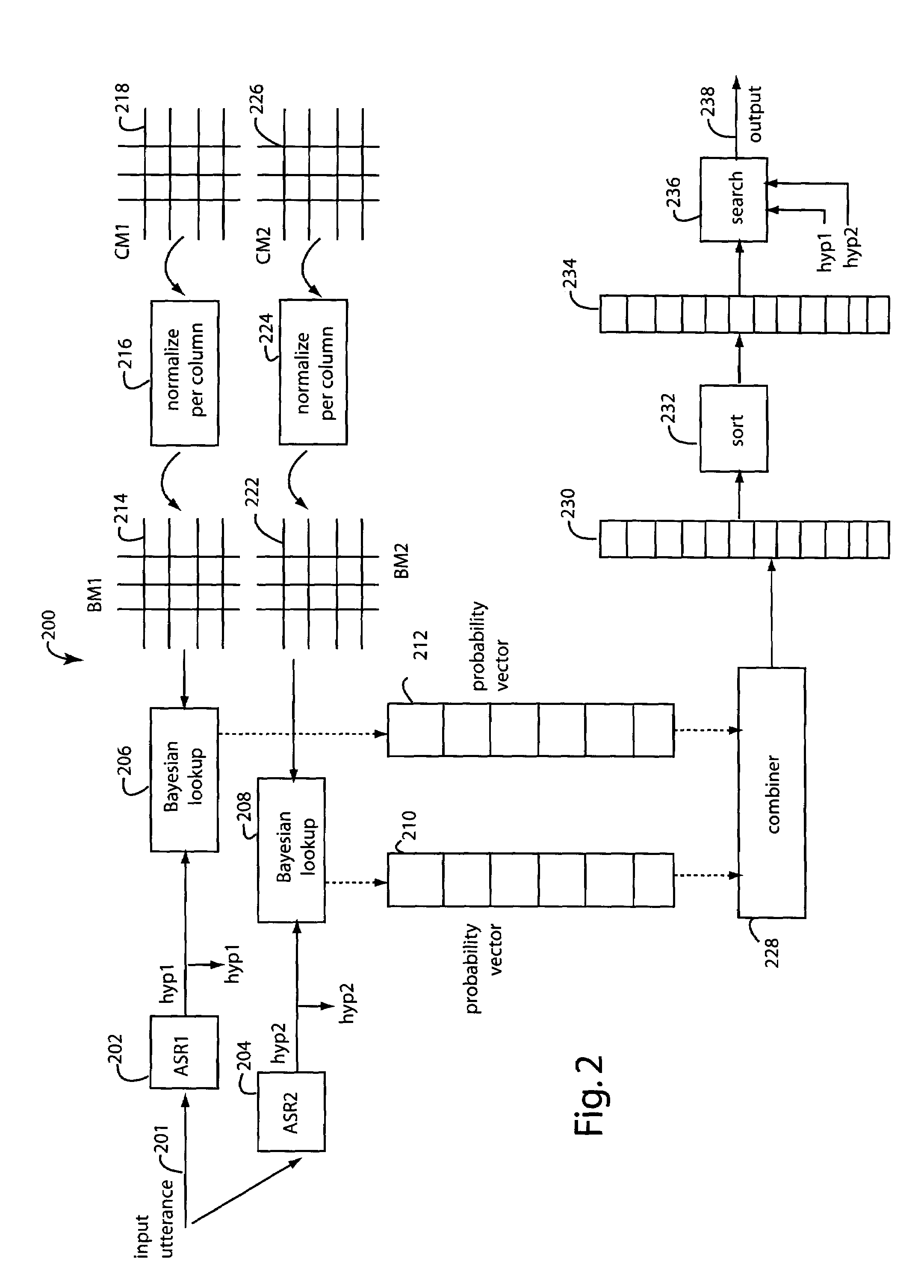Two-engine speech recognition
a speech recognition and two-engine technology, applied in speech recognition, speech analysis, instruments, etc., can solve the problems of high-accuracy continuous speech recognition, difficult automatic speech recognition with computers, and inability to generalize, so as to improve the accuracy of speech recognition, reduce costs, and perform better
- Summary
- Abstract
- Description
- Claims
- Application Information
AI Technical Summary
Benefits of technology
Problems solved by technology
Method used
Image
Examples
Embodiment Construction
[0025]FIG. 1 illustrates a first speech recognition system embodiment of the present invention, and is referred to herein by the general reference numeral 100. The system 100 uses an independent ordering of hypothesis alternatives, and comprises an utterance input 102 to be recognized that is provided as an input to both a first automated speech recognition engine (ASR1) 104, and a second automated speech recognition engine (ASR2) 106. Each automated speech recognition engine 104 and 106 will output a hypothesis for each utterance input. A hypothesis-one (hyp-1) from ASR1 104 and hypothesis-two (hyp-2) from ASR2 106 may or may not agree. If they do agree, the solution is simple. But if they disagree, then some more complex decision must be made because it otherwise appears to be a tie-vote.
[0026]Embodiments of the present invention generate an alternatives matrix (AM) from a confusion matrix (CM) associated with each automated speech recognition engine 104 and 106. A confusion matri...
PUM
 Login to View More
Login to View More Abstract
Description
Claims
Application Information
 Login to View More
Login to View More - R&D
- Intellectual Property
- Life Sciences
- Materials
- Tech Scout
- Unparalleled Data Quality
- Higher Quality Content
- 60% Fewer Hallucinations
Browse by: Latest US Patents, China's latest patents, Technical Efficacy Thesaurus, Application Domain, Technology Topic, Popular Technical Reports.
© 2025 PatSnap. All rights reserved.Legal|Privacy policy|Modern Slavery Act Transparency Statement|Sitemap|About US| Contact US: help@patsnap.com



